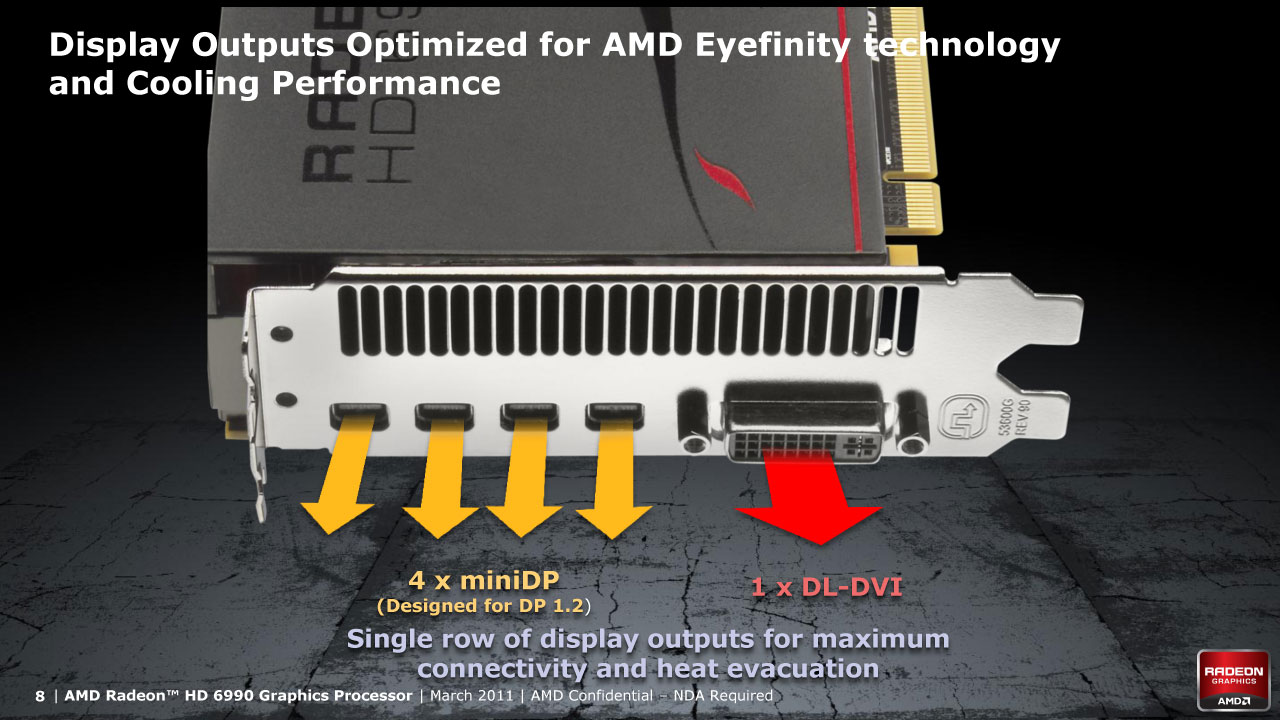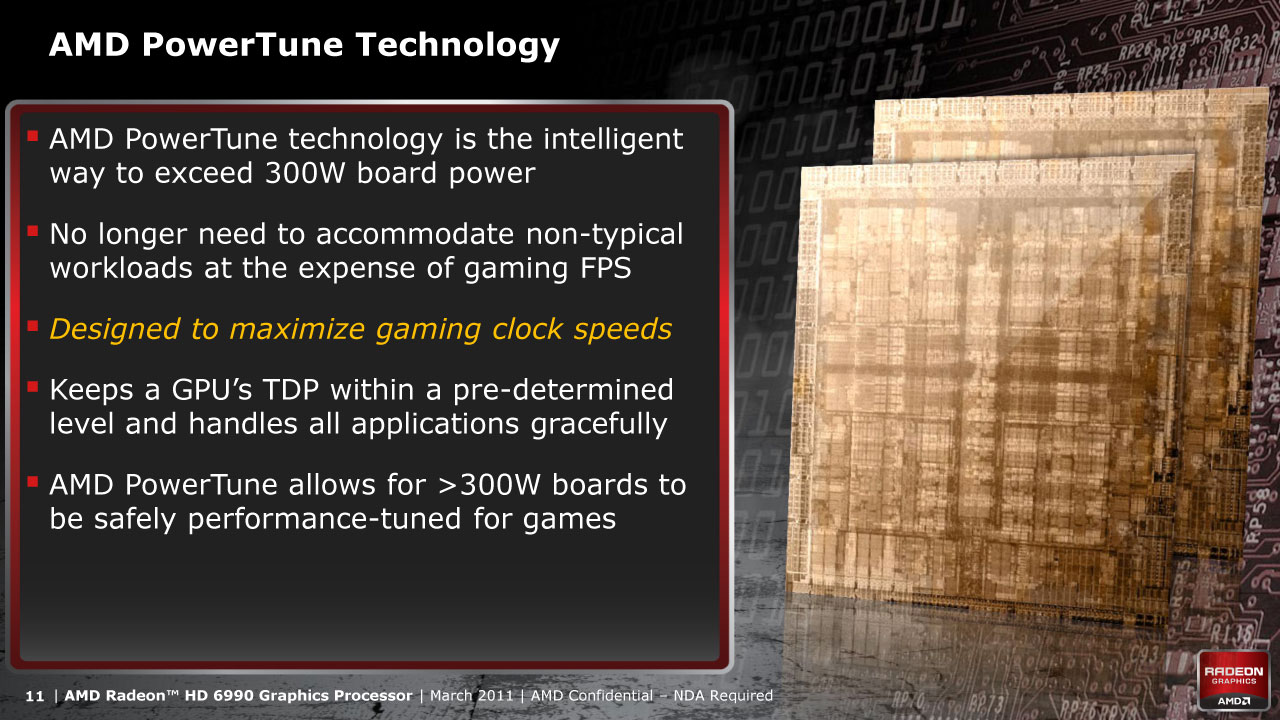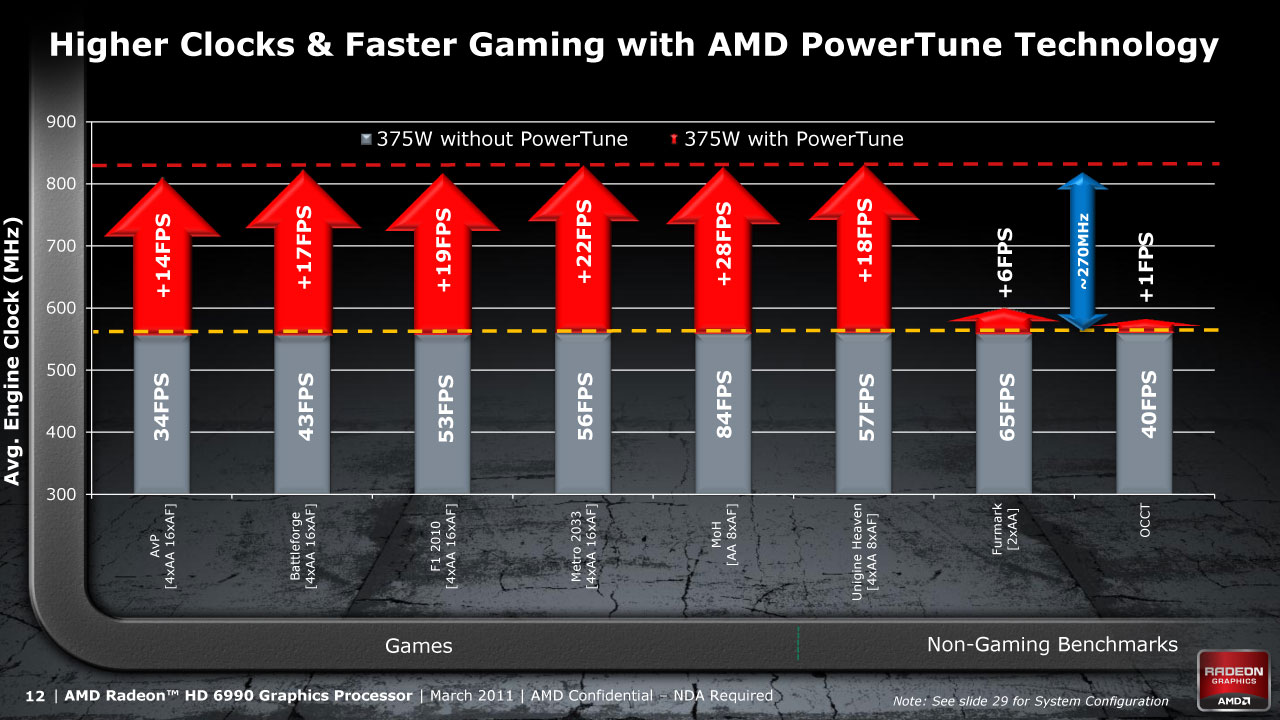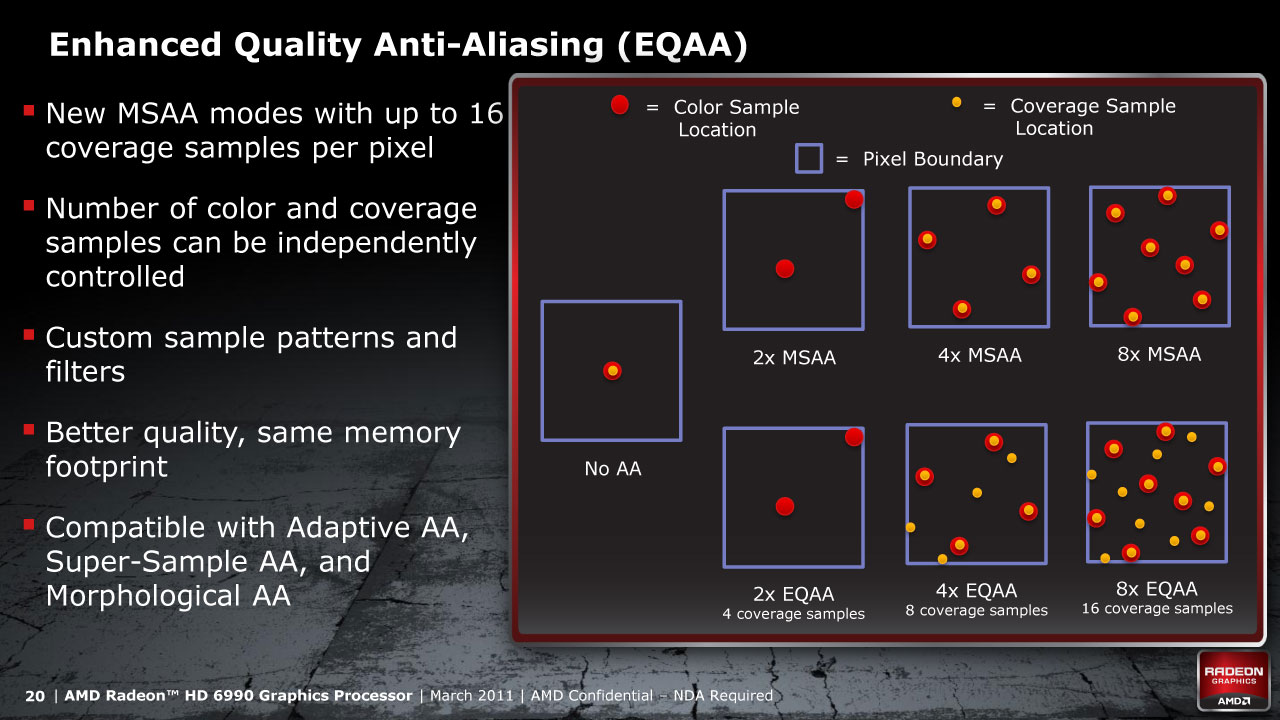AMD Radeon 6990 Review - Architecture Updates
Support for 5x1 Eyefinity Groups
The AMD Radeon HD 6990 brings support for 5x1 Eyefinity groups to the Radeon 6000 Family. As before, with the initial launch of 5x1 support in the 10.12 Catalyst driver, both 5x1-Portrait and 5x1-Landscape modes are available. Resolution support for 5x1-L is maxed at 5x1600x900, or 8000x900. The 8000 pixel width is a limitation of Windows 7, so the max available res is five 1600x900 - WITHOUT any bezel management possible.
Portrait mode supports both 5x1080x1920 and 5x900x1600. Since they are both within the 8000 pixel limit of Win7, Bezel Compensation is available. A setup with five 27" 16:9 panels at 5x1440x2560 would produce 7200x2560, which would allow for bezel management as well.
Connectors & Options
With the Radeon HD 6990, AMD moves to a 4x Mini-DP and 1x DL-DVI. Personally, I wish they had gone for 5x Mini-DP, or squeezed a 5th one on the board. I already have mini-DP to DP cables run for my Eyefinity6 card, and this caused me to make some setup changes.
However, I do understand why they made this choice. Adding the DL-DVI meant that users could drive 27" and 30" display panels without needing to resort to an Active Dual-Link DP Adapter, which are a pain at the very least. This 4+1 configuration allows AMD to use one entire side of the dual-slot card as an exhaust port. This improved airflow by 20% over the Radeon HD 5970.
The DVI port is the primary port on the card and will show up as display #1. The Mini-DP ports are monitors #2 - #5, from top to bottom.
AMD will be supplying a number of adapters as part of the retail pacakage. Each unit will include 1x Mini-DP Active Single-Link DVI, 1x Mini-DP Passive Single-Link DVI and 1x Mini-DP to HDMI passive adapter in the box.
Once DisplayPort 1.2 panels come on the market, or the DP 1.2 MST Hubs become available, you will be able to power multiple displays using just the Mini-DP 1.2 connections.


PowerTune
AMD introduced the PowerTune technology with the Radeon HD 6970 and HD 6950. The new technology allows the user to set the TDP to a pre-determined level, from -20% to +20%. This either clamps the TDP to the lower level, or raises the lid on it. In either case, the clocks are dynamically adjusted to meet these lower or higher levels.
With the Radeon HD 6990, AMD is using the PowerTune technology to "intelligently" exceed 300W of board power. Games can be individually tuned to provide better performance during the factory overdrive, which will pull 375W on the board.
The obvious upside to raising the TDP is the ability to overclock your card. PowerTune allows you to do this by directly controlling the power draw of the card, rather than through indirect tweaks to the clock and/or voltage. It's a new view of "factory overclocking".
Why would you lower your clocks? Well, if you're playing something that is not very demanding like Half-Life 2, Team Fortress 2, or if you'd just grinding/farming away in WOW - you probably don't need and fps in the hundreds of frames per second. With PowerTune you can scale back the performance for these instances and still have excellent performance.
This feature could also be used to remove spikes in fps, and smooth out your overall experience. Many performance complaints are related to inconsistent fps, resulting in spikes and dips in performance - creating jerkiness. If you're minimum fps in a game is already above 60fps, smoothing out the spikes to 90fps will actually provide a better perception of the experience. You won't perceive it as a lowering of average fps, but of a smoother more consistent gameplay.
Another benefit from dialing down the PowerTune is a decrease in heat and noise, due to decreased power consumption. My office gets extremely warm with my Eyefinity setup, and I would appreciate the ability to help alleviate this.


MLAA & EQAA
AMD continues to offer its new Morphological (MLAA) and Enchanced Quality (MLAA) Anti-Aliasing modes - both of which can be used together. Both of these technologies have been covered in the Radeon HD 6800 and HD 6900 reviews. A couple of slides are included below for reference.

